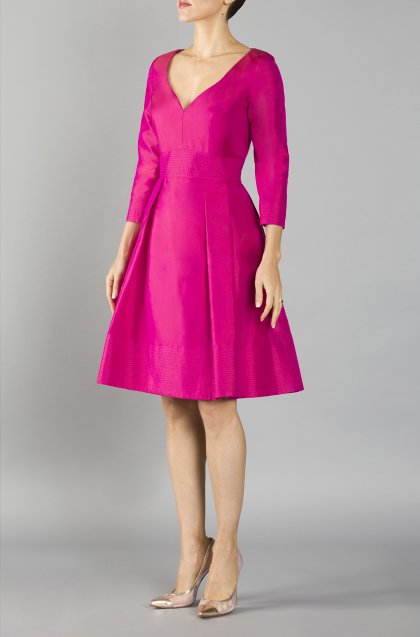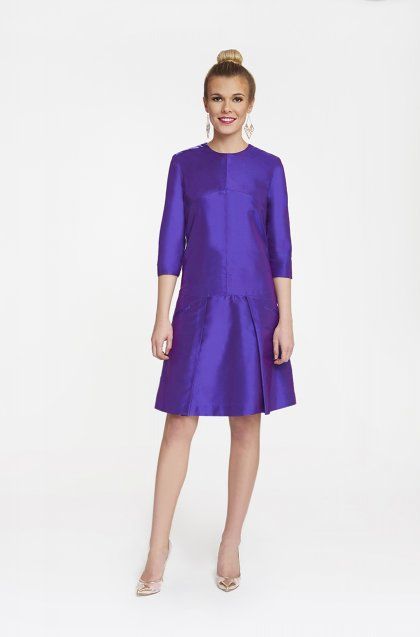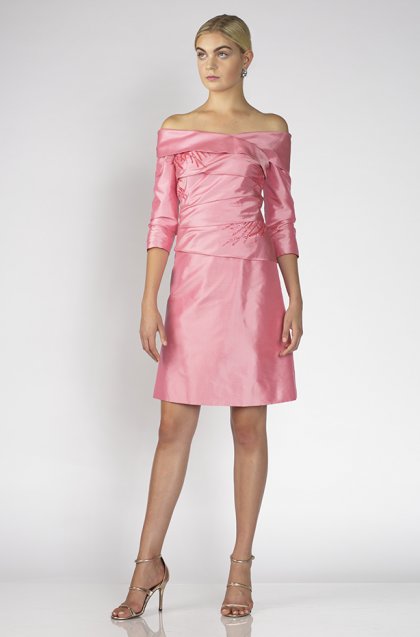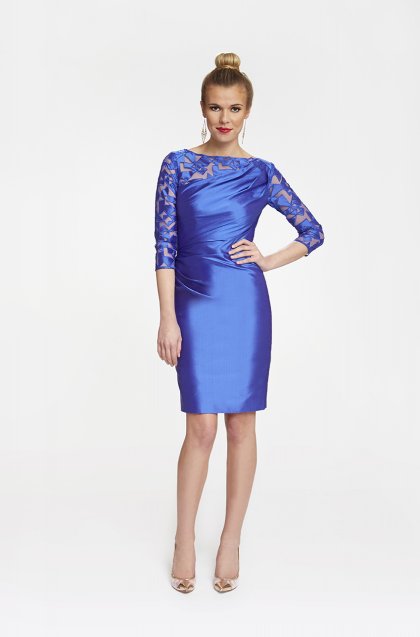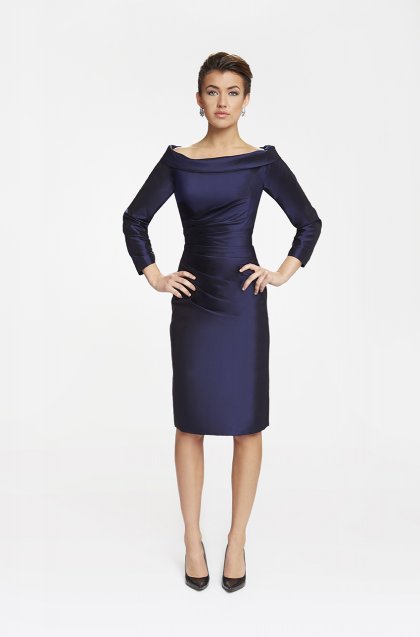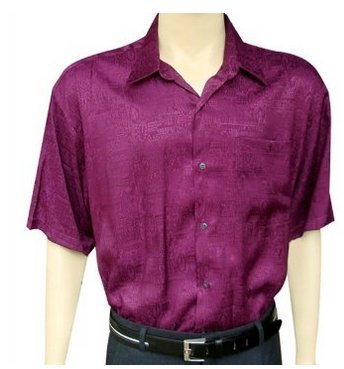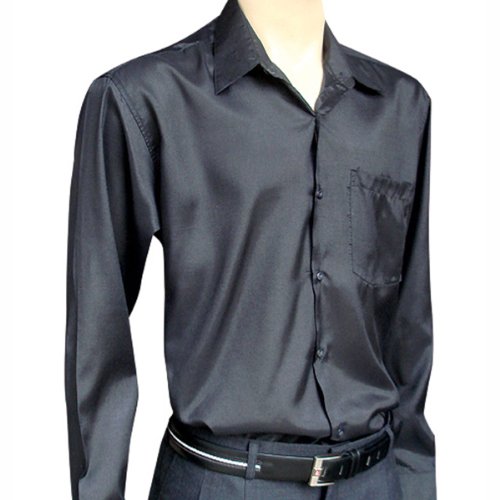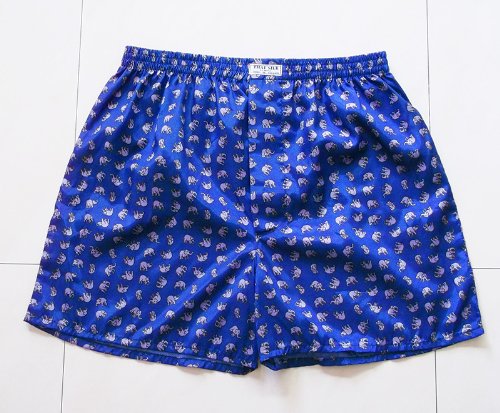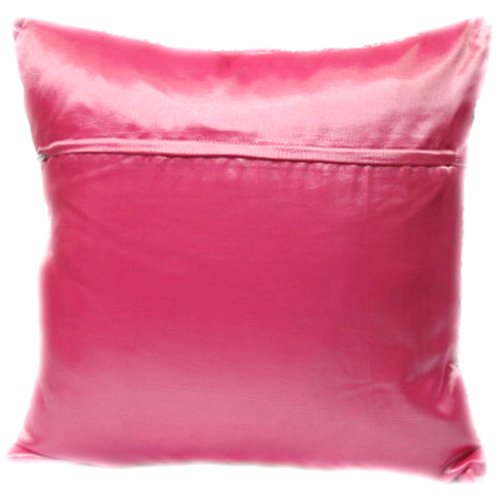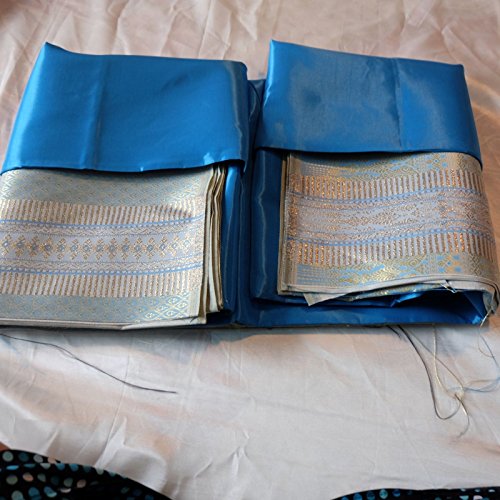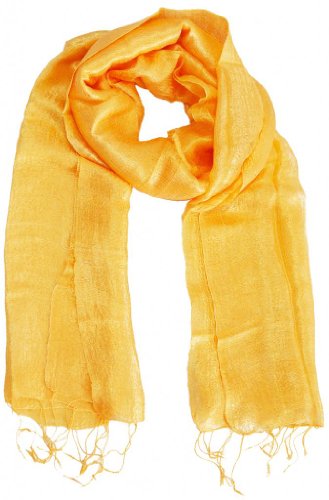Thai silk (Thai: ผ้าไหมไทย, RTGS: pha mai thai, pronounced [pʰâː mǎj tʰāj]) is produced from the cocoons of Thai silkworms. Thailand’s silkworm farmers cultivate both types of the domesticated silkworms that produce commercial silk: Samia ricini, commonly known as the eri silkworm, which produces matte eri silk, and the Bombyx mori, producer of the better known, glossy mulberry silk.[1] The latter is by far the larger silk producer of the two.[2]
In Thailand, the Center for Excellence in Silk at Kasetsart University’s Kamphaeng Saen campus plays a leading research role in sericulture research as well as providing silkworm eggs and know-how to Thai farmers.[1]
The production of Thai silk begins with the Bombyx mori, a small silk worm that comes from the eggs of a silk moth. For their first year, these worms feast on the leaves of mulberry trees before building a cocoon with their spittle.
In its original cocoon form, raw silk is bumpy and irregular. Thai weavers separate the completed cocoons from the mulberry bush and soak them in a vat of boiling water to separate the silk thread from the caterpillar inside the cocoon.
The Bombyx mori usually produces silk thread of varying colors, ranging from light gold to very light green, with lengths varying from 500 to 1,500 yards per cocoon.
A single thread filament is too thin to use on its own, so Thai women combine many threads to produce a thicker, usable fiber. They do this by hand-reeling the threads onto a wooden spindle to produce a uniform strand of raw silk. The process is a tedious one as it takes nearly 40 hours to produce a half kilogram of Thai silk.
Many local operations use a reeling machine for this task, but the majority of most silk thread is still hand-reeled. The difference is that hand-reeled threads produce three grades of silk: two fine grades that are ideal for lightweight fabrics and a thick grade for heavier material.
The silk fabric is then soaked in hot water and bleached before dyeing in order to remove the natural yellow coloring of Thai silk yarn. To do this, skeins of silk thread are immersed in large tubs of hydrogen peroxide. Once washed and dried, the silk is then woven using a traditional hand-operated loom.
Identification of genuine silk
As traditional Thai silk is hand woven, each silk fabric is unique and cannot be duplicated by commercial means. In contrast, artificial silk is machine woven, which means that every part of the fabric is identical and has the same color.
In addition, Thai silk has a unique lustre, with a sheen that has two unique blends: one color for the warp and another for the weft. Its color will change when viewed at varying angles to light.
Thai silk smells like hair when burned. The silk is similar to the composition of human hair and fingernails. When the flame is removed, Thai silk immediately stops burning. Artificial silk smells like plastic when burned and continues to burn even if the flame is removed.
In terms of price, Thai silk is usually 10 times more expensive than artificial silk.
A simple way to identify authentic silk is the “wedding ring” test. When pulling silk fabric through a ring, it will easily pass through. Imitation fabrics will bunch up and be difficult or impossible to pull through the ring.
At Silk and Sports Emporium we use local farmers and operators in the hills of Chiang Mai to produce our silk and then we use local fabric shops to design and produce our clothing.
Contact us for a more detailed list of our clothing, Ties and Underwear.
